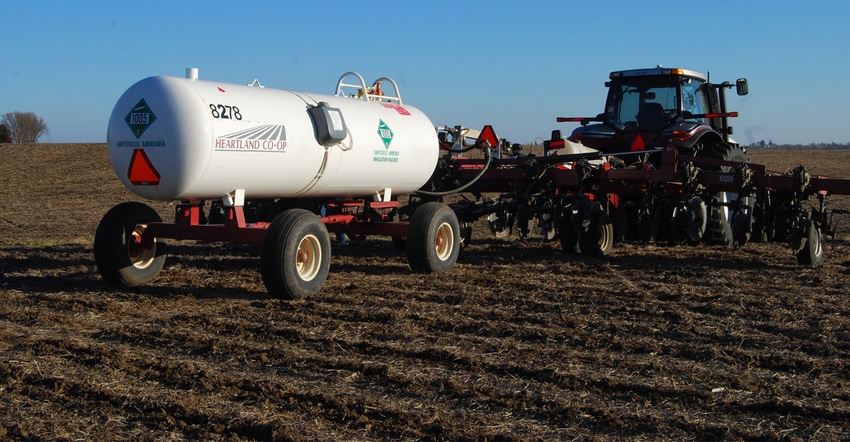
The first day of spring arrived March 20 with some anhydrous ammonia applications being made in central Iowa fields. Corn planting time will soon be here; April is just around the corner. Following is an update on several crop management considerations for farmers to think about in late March and early April. This information comes from Iowa State University Extension field agronomists Mark Johnson and Brian Lang.
The NPKnowledge website from ISU provides an overview of statewide soil temperatures. For more detailed information on soil temperatures and trends, the Iowa Environmental Mesonet website has links to automated weather stations at various Iowa sites showing hourly soil temperature readings. Click on “Plot Time Series” for a three-panel illustration of soil temperature, air temperature, solar radiation and soil water content (soil water content readings are not accurate when the soil is frozen) at your general location, date, etc.
Check stored grain as weather warms
“If you plan to hold stored grain into warmer weather, you need to be aware of what is going on in your bins this spring,” says Johnson. Keeping stored grain cool is important as outdoor temperatures start to warm in March and April.
“As weather warms up, often the side of the bin is warmer due to direct sunlight hitting it,” he notes. “This can cause the grain to warm to a higher temperature than the outside air. If that happens, you may want to run the fans during the cool evenings or during the cool part of the day. Be sure to close the ducts during daytime so warm, moist air is not pushed through the grain.”
Plan on seeding oats this spring?
If you want to seed any spring small grains such as oats, it’s time to get ready. The optimum planting date for central Iowa is about April 10, says Johnson. ISU research on date of oat seeding in central Iowa found that after April 15, grain yield drops about 10% per week during April and 15% per week during the first two weeks of May. Best oat yields are achieved when seeded from late March to mid-April.
ISU released a news item last spring titled “Fine-tune Oat Seeding Rate This Spring.” It has newer research-based recommendations on seeding rate and other valuable information. Click here and find the newsletter article “04025 Oat planting news March 30.pdf.”
Evaluate alfalfa stands for winter injury
ISU Extension agronomists have been receiving inquiries about anticipated results of the recent warm weather and its being followed by abnormally cold weather. How does that affect alfalfa stands? To help answer that question, Lang recently wrote a blog.
“In addition, depending on weather, in about three weeks it’ll be time to start checking your alfalfa fields and determining if you want to keep the stand for another season or if it is time to tear this one up,” says Lang. There are two main things to determine. First, are there enough plants or stems? And second, are the crowns that are present healthy enough to survive throughout the season?
Slice open several crowns from various areas in the field and inspect the condition of the tissue. If it is brown or rotting, the plant is pretty much gone. If half or more of the area is brown, the plant probably won’t make it through the season. If the whole area is creamy white, it is a healthy plant.
Determine how many plants are healthy enough and then how many healthy stems per square foot are present. Counting plants used to be the most common method, but with more research, counting stems has appeared to be a better indicator. Fifty or more stems per square foot should provide very good forage yields. And 40 or more stems from plants with healthy crowns will provide a good hay crop. If there are fewer than 40 stems per square foot, then planting another alfalfa crop should be considered.
Drought in Iowa this spring?
There’s no drought yet, although some areas of Iowa were showing up as abnormally dry as of March 22. For a look at how the most recent 30 years of annual precipitation and spring precipitation compare to the previous 30 years, click here and find “05015 annual & spring precip 30 yr. vs 30 yr.pdf.” For a comparison of growing degree days, click on “050155 annual & spring GDD 30 yr. vs. 30 yr.pdf.”
About the Author(s)
You May Also Like




